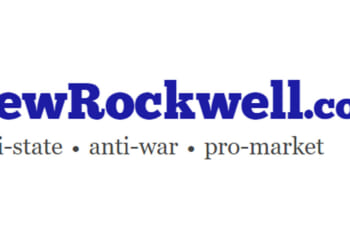Apple recently banned crowd-sourced applications from its App Store, including ICEBlock, that let users post nearby sightings and locations of US Immigration and Customs Enforcement (ICE) agents. Debuting in April, ICEBlock rose “to the top of the Apple App Store” by early July.
Relying on anonymously uploaded sightings, ICEBlock alerts other users “about ICE presence within a 5-mile radius.” One article notes “users can only post a sighting within a five-mile radius of their location once every five minutes.”

ICEBlock drew the Trump administration’s wrath. During a June 30 interview with Sean Hannity, US Attorney General Pam Bondi criticized ICEBlock’s developer, Joshua Aaron. She also claimed the application’s speech—locations of ICE agents based on public sightings—wasn’t safeguarded by the First Amendment:
He’s giving a message to criminals where our federal officers are. And he cannot do that. And we are looking at it, we are looking at him, and he better watch out, because that’s not a protected speech. That is threatening the lives of our law enforcement officers throughout this country.
By October 3, Bondi claimed victory: “We reached out to Apple . . . demanding they remove the ICEBlock app from their App Store—and Apple did so.” Does this violate the First Amendment rights of ICEBlock?
First Principles. The First Amendment only guards against government censorship, not censorship by private companies. As Justice Brett Kavanaugh recently explained, “The Free Speech Clause does not prohibit private abridgment of speech.” (emphasis in original). Thus, when Apple decides not to distribute speech-based products like apps, there’s presumptively no First Amendment violation.
Jawboning. Things would change if ICEBlock could prove the government coerced—not merely persuaded or pressured—Apple to remove the application. Coercion would constitute unlawful jawboning. The Supreme Court concluded in 2024 that “a government official cannot coerce a private party to punish or suppress disfavored speech on her behalf.” Coercion would exist if the government made a statement to Apple that “could be reasonably understood to convey a threat of adverse government action” unless Apple banned ICEBlock. What if, hypothetically, Bondi suggested to Apple that its exemptions from certain tariffs would be lost unless it jettisoned ICEBlock? Protracted litigation by ICEBlock against the government would be necessary to try to prove this.
Apple’s public statement gives no indication of coercion, only persuasion:
We created the App Store to be a safe and trusted place to discover apps. Based on information we’ve received from law enforcement about the safety risks associated with ICEBlock, we have removed it and similar apps from the App Store.
Protected Expression vs. Unlawful Incitement. The Supreme Court has concluded that “if a newspaper lawfully obtains truthful information about a matter of public significance then state officials may not constitutionally punish publication of the information, absent a need to further a state interest of the highest order.” Under this “repeatedly held” First Amendment rule, if truthful facts of public concern are gathered legally, their publication is constitutionally safeguarded unless the government demonstrates a compelling, overriding interest.
The initial factors support ICEBlock. As David Greene of the Electronic Frontier Foundation recently stated, “These apps are publishing constitutionally protected speech. They’re publishing truthful information about matters of public interest that people obtained just by witnessing public events.” Furthermore, as the Reporters Committee for Freedom of the Press observes, “every federal court of appeals to address the question agrees: The First Amendment protects your right to film police officers engaged in the performance of their public duties.”
The government would counter that it has a compelling interest in protecting ICE personnel from violence that overrides this. Indeed, Bondi claims a “wave of violence against ICE has been driven by online apps.” Courts, however, would demand concrete evidence of ICEBlock causing violence.
Incitement to violence isn’t safeguarded by the First Amendment, but it’s a narrow carveout from constitutional protection. The Supreme Court held in Brandenburg v. Ohio that “advocacy of the use of force or of law violation” is unprotected only when it’s “directed to inciting or producing imminent lawless action and is likely to incite or produce such action.” The word “directed” means intended, so the threshold question is whether Joshua Aaron intended ICEBlock to cause violence against ICE agents. Brandenburg also requires that speech be “likely” (probable) to imminently (immediately) produce violence before it’s deemed unprotected. This makes “the Brandenburg standard . . . difficult to satisfy.”
ICEBlock features a warning when users log ICE sightings that makes proving Brandenburg’s intent requirement extremely difficult: “Please note that the use of this app is for information and notification purposes only. It is not to be used for the purposes of inciting violence or interfering with law enforcement.”
In sum, ICEBlock’s speech likely is constitutional, but winning a jawboning claim against the government is another matter.
The post Apple’s Removal of ICE-Location Apps: Examining First Amendment Issues appeared first on American Enterprise Institute – AEI.










